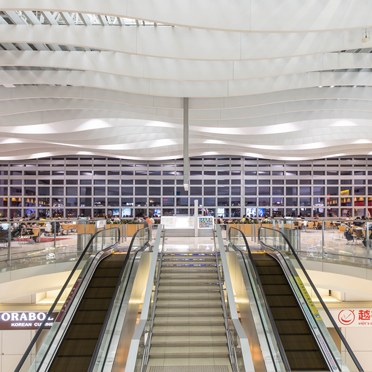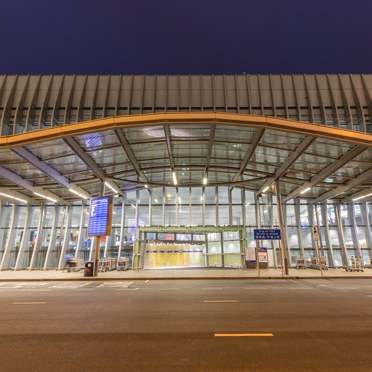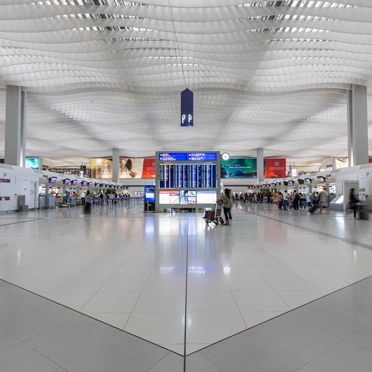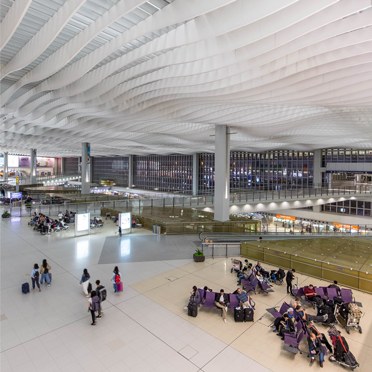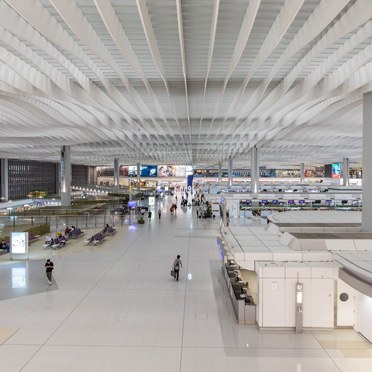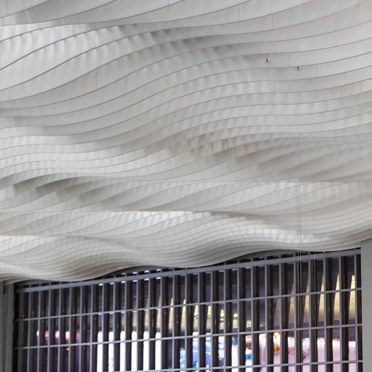Better by half: Thorn cuts the light points at Hong Kong Airport by 50%
- Lamp efficacy
Lamp efficacy
Ensuring the lamp efficiently converts electricity into light (lm/W).
- Ballast classification
Ballast classification
Controlling the electricity supply to the lamp (Energy Efficiency Index).
- Luminaire distribution
Luminaire distribution
Controlling light emission using optics which bend and shape the light to the correct location.
- System efficacy
System efficacy
Combining optical and thermal control within the luminaire (luminaire lm/W).
- Presence/absence detection
Presence/absence detection
Providing lighting only when it’s needed.
- Daylight detection
Daylight detection
Reducing waste light during daylight hours.
- Constant illuminance
Constant illuminance
Producing the correct lighting levels for the duration of the maintenance period.
- Task-scene setting
Task-scene setting
Allowing the user to set scenes and adapt the lighting to different tasks.
- Timed off
Timed off
Automatic cut-off to turn all lights off during unoccupied hours.
- Task lighting
Task lighting
Lighting task areas with the correct amount of light.
- Zoning of lighting
Zoning of lighting
Zoning lighting in accordance to occupancy patterns or window location.
- Maintenance schedule
Maintenance schedule
Tailoring maintenance schedules in accordance to product age, performance and environment.
- Waste light
Waste light
Eliminating waste light which does not hit the intended target.
- Reflectance
Reflectance
Taking advantage of light which is reflected from the surface within the space.
- Visible smart metering
Visible smart metering
Enabling results of actions to be quickly seen as increased or decreased energy use to encourage responsible energy consumption.
Hong Kong International Airport is used to dealing with big figures. The Asian transport hub has established itself as the busiest cargo airport in the world and processes more than 65 million passengers each year. Yet while the site continues to grow in terms of both importance and numbers, the refurbishment of Terminal 2 has enabled the airport authorities to implement welcome reductions in energy consumption and luminaire quantities – thanks to the HiPak LED high-bay from Thorn.
The Challenge
Hong Kong International Airport has been shaped by a clear green concept, combining interesting design with a strong commitment to limit the consumption of valuable resources. A prime example of this approach can be found in Terminal 2, where an innovative wave construction on the ceiling supports both style and function. The rippled white structure creates an impressive visual impact and crucially allows plenty of daylight to penetrate the extensive building. Although the renovation of Terminal 2 offered the Hong Kong Airport Authorities (HKAA) the chance to further strengthen their green credentials, the new lighting solution also needed to meet a number of strict lighting-design criteria. The aim was to replace the existing LED fittings with a product that could fulfil the tricky task of using indirect light to deliver high uniformity and a generous average lux level.
The Solution
Having already installed products from the Thorn portfolio in Terminal 1, the airport authorities spoke to the Zumtobel Group APAC regional office in Hong Kong about a suitable solution for the Terminal 2 refurbishment project. The client was immediately impressed by the efficiency and lighting quality of the robust HiPak LED high-bay. The powerful lumen output and outstanding efficacy meant that one HiPak fitting could replace two of the original LED luminaires, making it possible to halve the number of light points in the terminal. At the same time, the stable colour temperature could guarantee consistent quality by avoiding any changes in tone at the edge of the light beam.
The Results
Thorn worked closely with the client to develop a unique new version of the 250W HiPak luminaire. This customised product combines a special colour temperature of 5000 Kelvin with the standard lens technology, which ensures maximum precision and minimum light waste. More than 700 fittings have been carefully installed and aligned to utilise the high reflectance values of the white ceiling structure. The wide HiPak beam is reflected by the ceiling, providing indirect light that achieves high uniformity and an average of 85 lux on the terminal floor. This soft and even light coverage therefore creates a pleasant lit environment for passengers and workers when the natural daylight starts to fade. HiPak also fits the bill when it comes to function and durability. The IP65-rated fitting is protected against dust and moisture, while the cooling fins integrated into the die-cast aluminium housing help regulate the temperature of the internal components by letting air pass through the luminaire – a major advantage in high applications such as the Terminal 2 building.
According to Hong Kong Airport Authority, the installation of HiPak luminaires from Thorn has helped the airport take its green design concept to a new level: “We thought that new LED luminaires would give us an improvement in efficiency, but we never expected to be able to cut the number of fittings by 50 per cent. This was obviously great news for us, but ultimately it was the excellent lighting performance that confirmed our decision. There is no point saving energy at the expense of quality, which is exactly why we opted for HiPak.”

